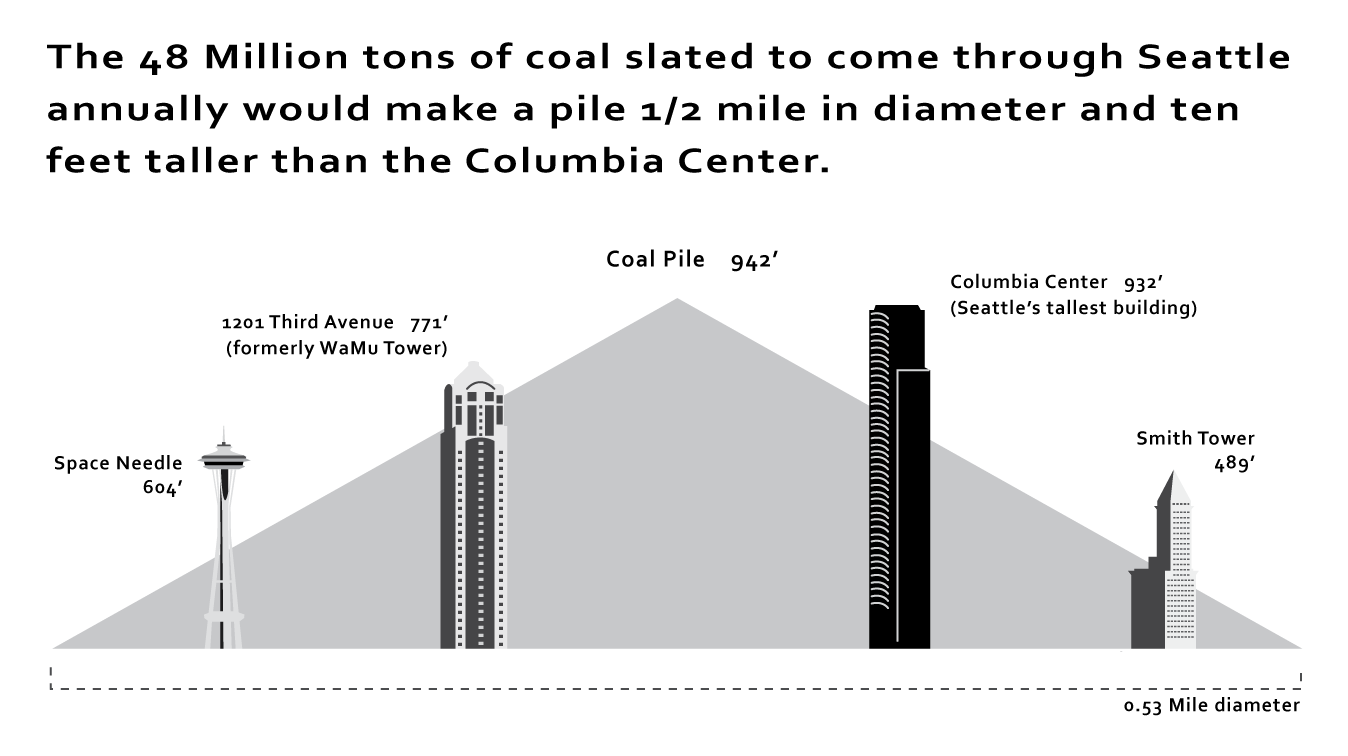How much is 48 million tons of coal?
It’s not an academic question. If big coal companies get their way, that’s how much coal will be shipped through Seattle, up to an export terminal north of Bellingham, and then on to Asian markets each year.
A single ton is easy enough to visualize: it’s 40 cubic feet, or a stack that’s 2 feet on a side and as high as the rim of a basketball hoop. But 48 million tons is tough to visualize without some context, and a little math.
Math? Context? Sounds like a job for…an infographic!!! (Click to embiggen.)
In short, 48 million tons makes a great, big, ginormous pile of coal. A pile nearly 1,000 feet high, and more than half a mile in diameter. A pile that would bury a huge part of downtown Seattle—stretching from Pike Place Market in the north to the Smith Tower in the south. A pile that just happens to be be a bit taller than Seattle’s tallest skyscraper.
It’s a monstrous amount of coal. Each year. And when burned, that much coal releases a tsunami of greenhouse emissions and other pollutants into the atmosphere.
Here’s another version of the infographic, which may help you visualize how that ginormous pile of coal would look against the actual Seattle skyline. (Click to embiggen.)
(Readers: Any comments on which version of the infographic works better?)
Of course, nobody is suggesting that all of that coal would actually be piled up at the Cherry Point terminal at one time. Instead it would be shipped out, one boatload at a time, past the San Juans, across the Pacific, to an import terminal in China (or perhaps Korea or Japan) and then transported to a coal fired power plant. And when burned, we’d get some of the resulting pollution coming right back here, in the form of mercury and soot emissions that can make the trans-oceanic trek on easterly air currents. Not to mention the CO2 emissions that warm the global climate. With coal exports, Seattle gets traffic delays, coal dust, long-distance air pollution, and climate change, with literally no upside.
If that sort of thing makes you miffed, you might want to consider coming out to say something at one of the public hearings. If you plan to attend the Seattle hearing, the time and date have changed—apparently because there’s been so much opposition to the proposal at other hearings that they needed a bigger venue.
Seattle, WA: Thurs. 12/13, 4:00 p.m. to 7:00 p.m. Washington State Convention Center, Ballroom 6F, 800 Convention Place, Seattle
Infographics by goodmeasures.biz. Thanks, Devin!




Comments are closed.